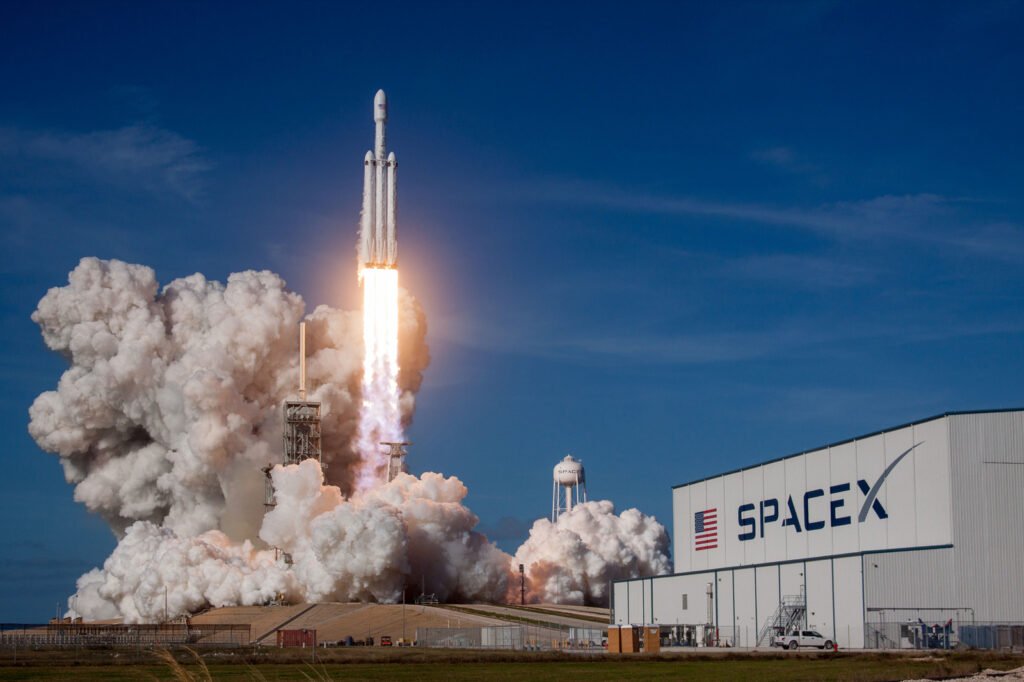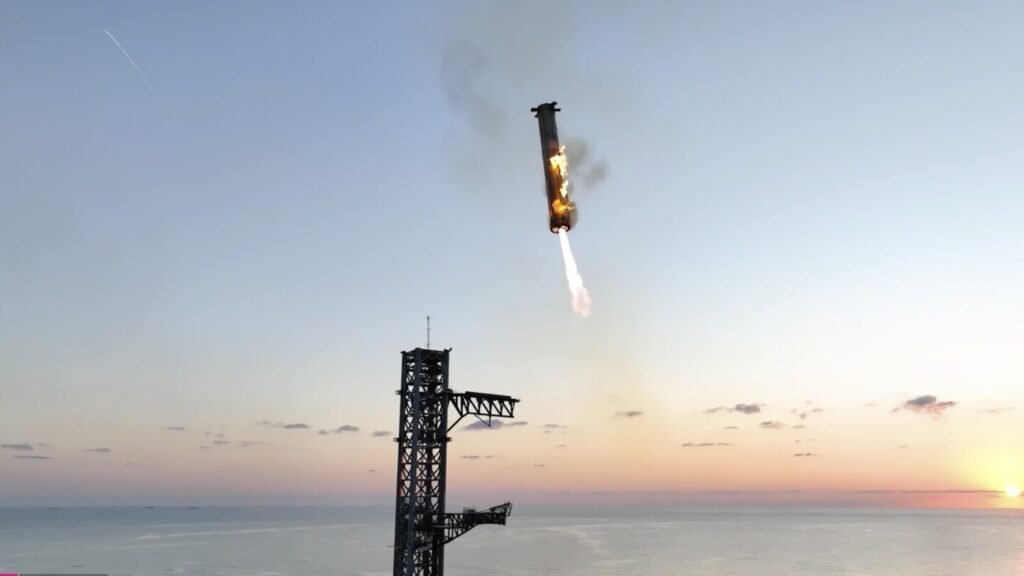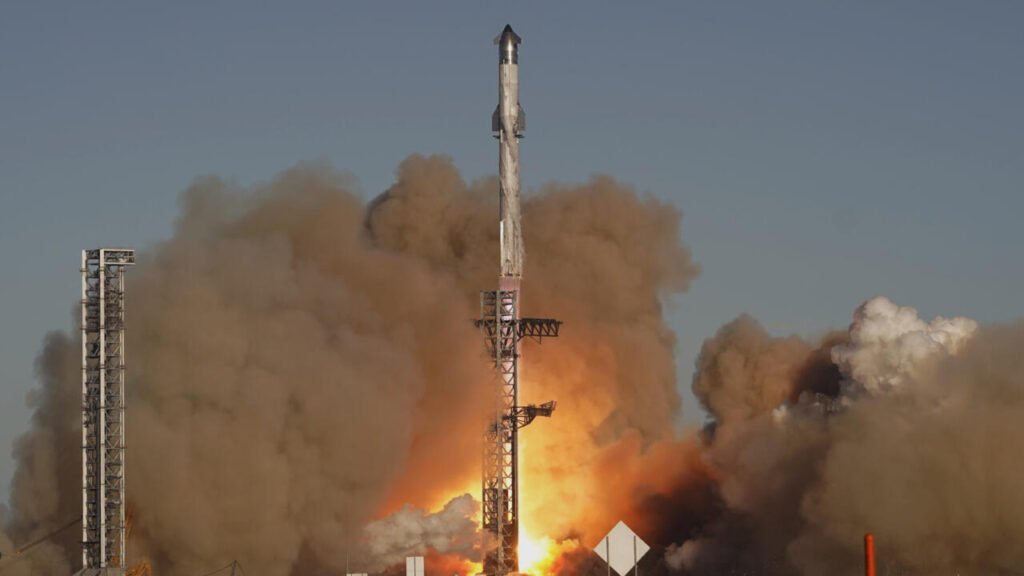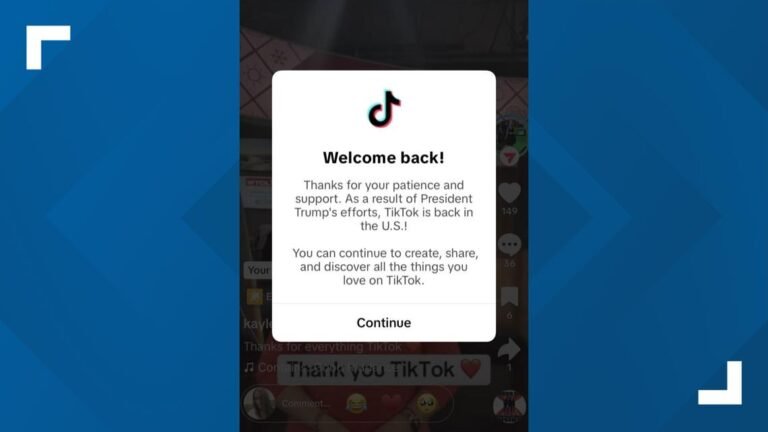
SpaceX Starship Test Flight Ends in Loss of Spacecraft After Thrilling Booster Catch
BOCA CHICA, TEXAS – SpaceX’s ambitious Starship 7 launch took to the skies on Thursday, marking a significant step in the company’s development of reusable spacecraft. However, the test flight concluded with a setback as the Starship spacecraft broke apart during ascent. Despite the loss, SpaceX achieved a spectacular milestone by successfully catching the Super Heavy booster with its giant mechanical arms, nicknamed “chopsticks,” at the Boca Chica, Texas, launch site.
The SpaceX Starship rocket launch blasted off at 5:37 p.m. ET from SpaceX’s Gulf Coast facility, powered by 33 Raptor engines producing an impressive 16 million pounds of thrust. The launch initially went as planned, with the Super Heavy booster separating two minutes and 40 seconds after liftoff. The booster then executed a flawless descent, re-igniting its engines and gracefully landing between the chopsticks, showcasing SpaceX’s prowess in reusability.
A Rapid Unscheduled Disassembly
However, the Starship upper stage, designed to continue the journey into space, experienced issues during its ascent. Telemetry from the SpaceX Starship Flight 7 froze approximately eight minutes and 27 seconds into the flight, shortly after the six Raptor engines began shutting down. Moments later, SpaceX confirmed the Starship explosion, attributing it to a “rapid unscheduled disassembly” caused by a fire in the aft section.

Preliminary analysis by SpaceX’s founder, Elon Musk, suggests an oxygen and fuel leak in a cavity above the engine firewall might have triggered the failure. Musk announced plans to implement fire suppression systems, increase venting capacity, and conduct more rigorous checks for leaks before future flights.
Impact of Starship’s Loss
Debris from the Starship breakup fell into pre-designated hazard zones in the Atlantic Ocean. The Federal Aviation Administration (FAA) reported brief disruptions to air traffic at Miami and Fort Lauderdale airports, delaying flights for up to an hour.
In a statement, the FAA said, “Aircraft were briefly slowed and diverted around the area where space vehicle debris was falling. Normal operations have since resumed.”
SpaceX’s team emphasized that test flights like this one are critical for improving the Starship spacecraft and ensuring the success of future missions.
Testing New Systems and Capabilities
The SpaceX Starship Flight 7 test flight featured several advancements, including a redesigned avionics system, enhanced heat shields, and dummy Starlink satellites packed onboard for deployment tests. This mission was intended to evaluate the upper stage’s ability to restart engines in space and simulate satellite deployment using a novel Pez-style dispenser.
Ambitious Future Plans for SpaceX Starship

Despite the setback, SpaceX is optimistic about the Starship program, which is central to its vision of human space exploration. The fully reusable Starship system is intended to support missions to the Moon, Mars, and beyond.
SpaceX’s reusability goals align with NASA’s Artemis program, which plans to use a variant of the Starship to land astronauts on the Moon by 2027. This will require Starship tankers to rendezvous in low-Earth orbit for refueling before heading into deep space.
The Starship is also poised to launch thousands of Starlink satellites, essential for SpaceX’s growing broadband internet network.
A Thrilling Spectacle for Space Enthusiasts
Thursday’s SpaceX launch today live drew thousands of spectators to Boca Chica, Texas, while millions tuned in online to witness the dramatic event. The rocket launch illuminated the Gulf Coast skies with a jet of fiery exhaust visible for miles.
This SpaceX Starship test flight represents both the risks and rewards of pushing the boundaries of space exploration. As the company learns from these challenges, the goal of making space travel more affordable and accessible remains within reach.
SpaceX will continue refining the Starship system, with more test flights planned for 2025. As Musk stated, “Success comes from what we learn, and today’s flight will help us improve Starship’s reliability.”
SpaceX Debris Hotline
SpaceX has requested that anyone who encounters debris from the Starship explosion report it to their debris hotline at 1-866-623-0234 or contact local authorities.
The test flight highlights the iterative process of innovation as SpaceX continues its journey to revolutionize space travel and bring humanity closer to the stars.



